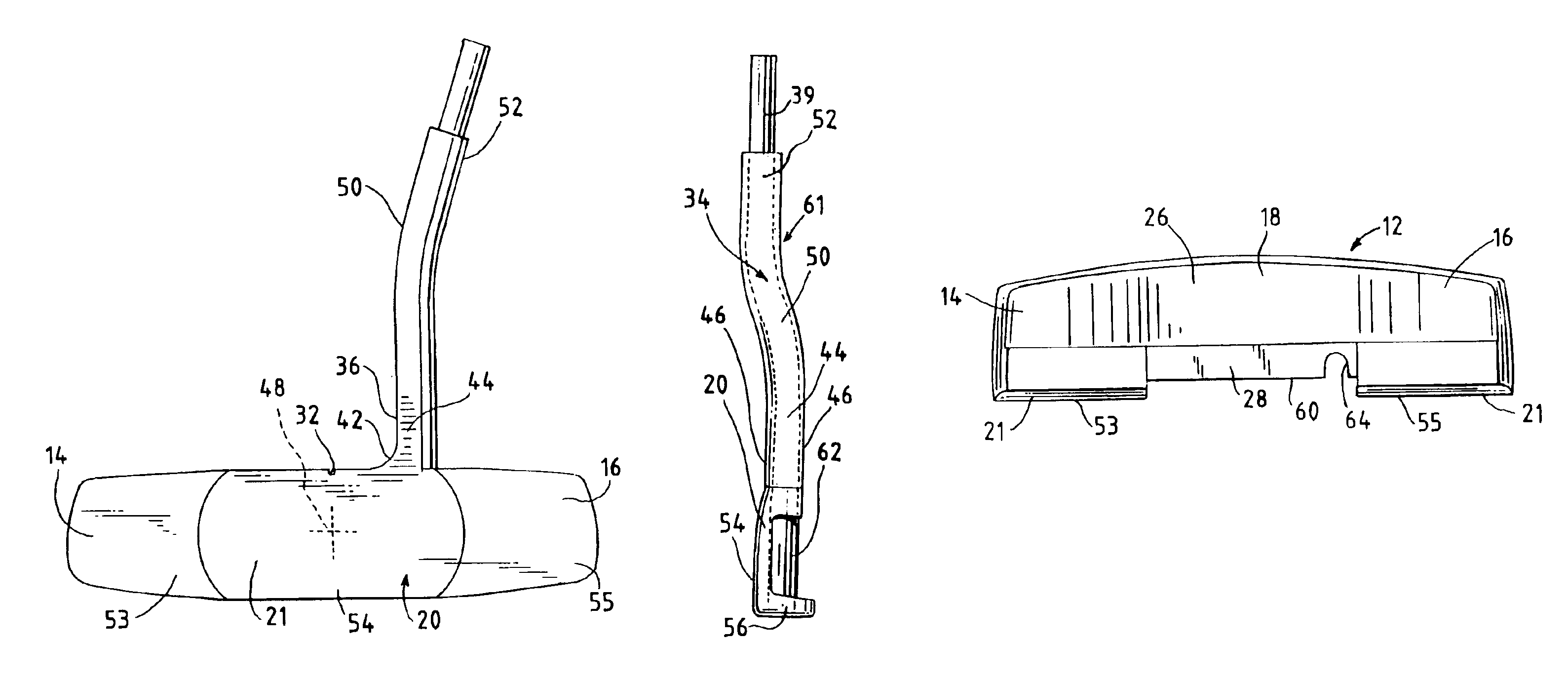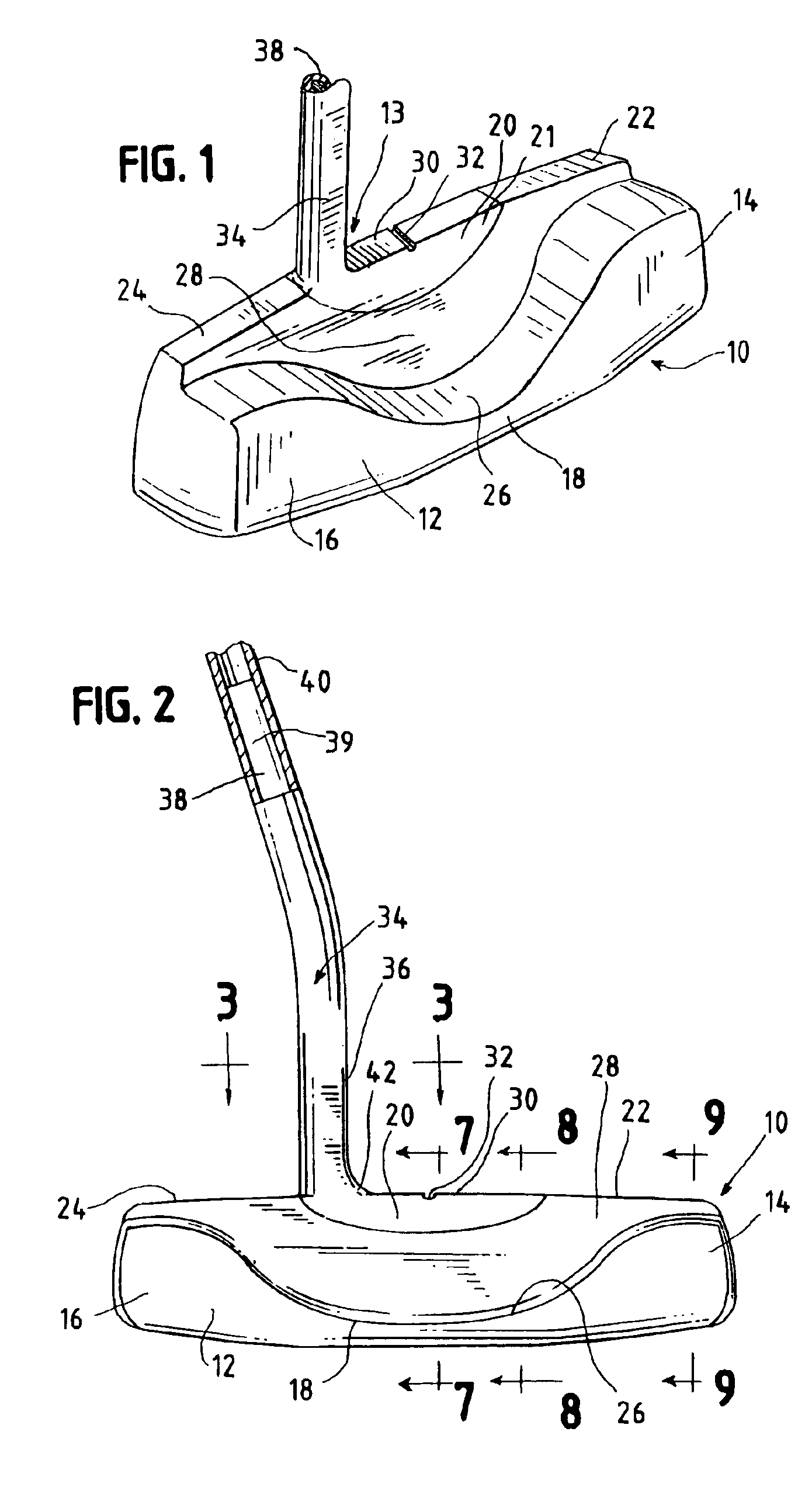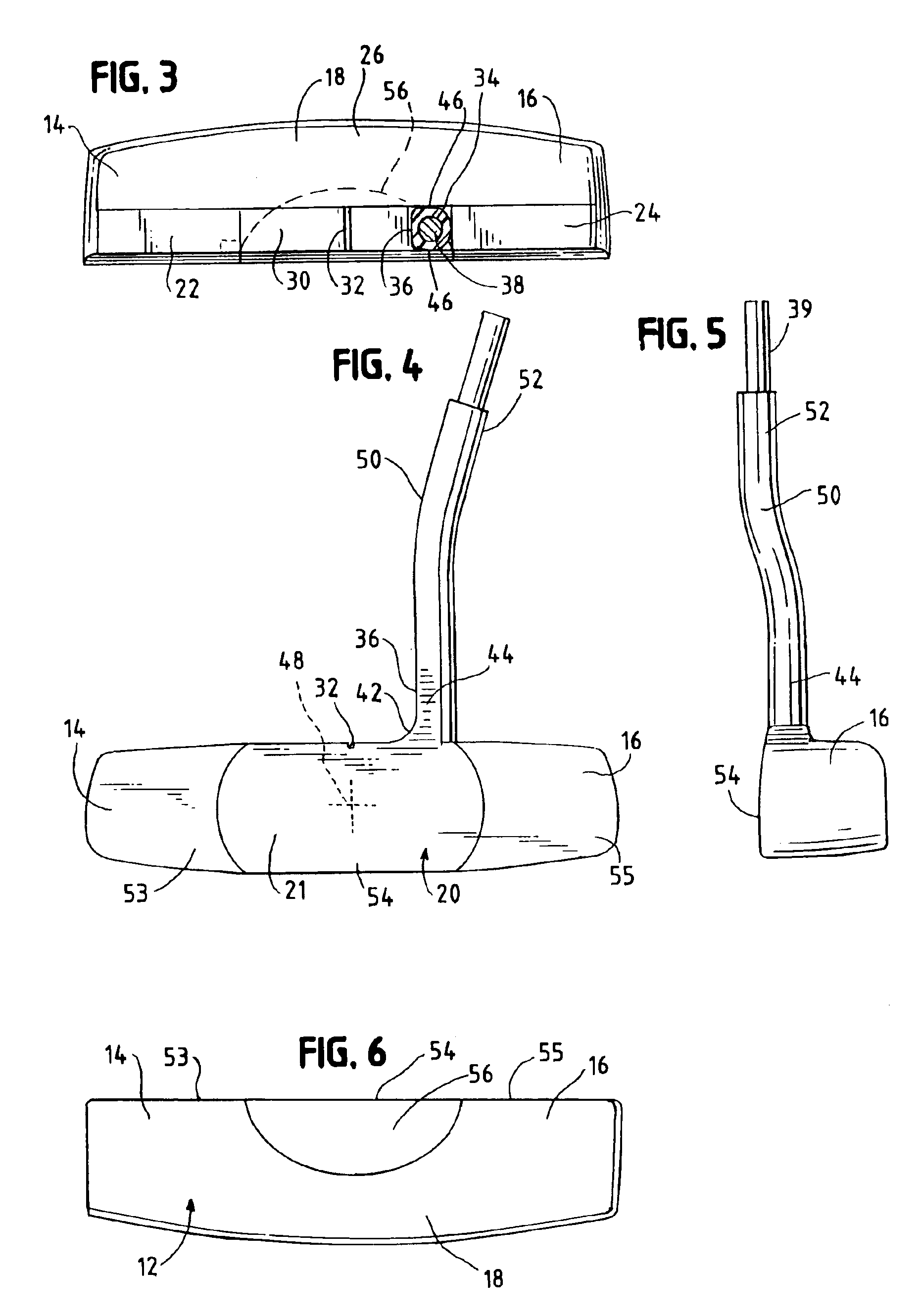Golf club and methods of manufacture
a technology of golf clubs and manufacture methods, applied in the field of golf clubs, can solve the problems of unattractive golf clubs, distracting physical appearance, and not providing the optimal perspective to the golfer
- Summary
- Abstract
- Description
- Claims
- Application Information
AI Technical Summary
Benefits of technology
Problems solved by technology
Method used
Image
Examples
Embodiment Construction
Referring now to the drawings, FIGS. 1-9 show a first embodiment 10 of the golf club of this invention that provides enhanced golfer performance and satisfaction and is manufactured by a simplified and efficient method. The clubhead is manufactured as two component elements that are combined in a simple assembly operation and integrated with a shaft to form the complete club. One of the components of the first embodiment, a combined body and hosel assembly 61 comprising body 20 and hosel 34 is shown in FIGS. 10-16. The second component, a shell 12 is shown in FIGS. 17-20. A second embodiment described herein is shown in FIGS. 21-28.
Referring now to FIGS. 1 and 2, FIG. 1 is a partial perspective backside view of clubhead 10 and shows shell 12 having longitudinally aligned polar toe portion 14 and polar heel portion 16 with a medial portion 18 therebetween. The shell of relatively high mass density material such as steel is configured to provide polar mass concentrations 14 and 16 for...
PUM
 Login to View More
Login to View More Abstract
Description
Claims
Application Information
 Login to View More
Login to View More - R&D
- Intellectual Property
- Life Sciences
- Materials
- Tech Scout
- Unparalleled Data Quality
- Higher Quality Content
- 60% Fewer Hallucinations
Browse by: Latest US Patents, China's latest patents, Technical Efficacy Thesaurus, Application Domain, Technology Topic, Popular Technical Reports.
© 2025 PatSnap. All rights reserved.Legal|Privacy policy|Modern Slavery Act Transparency Statement|Sitemap|About US| Contact US: help@patsnap.com



